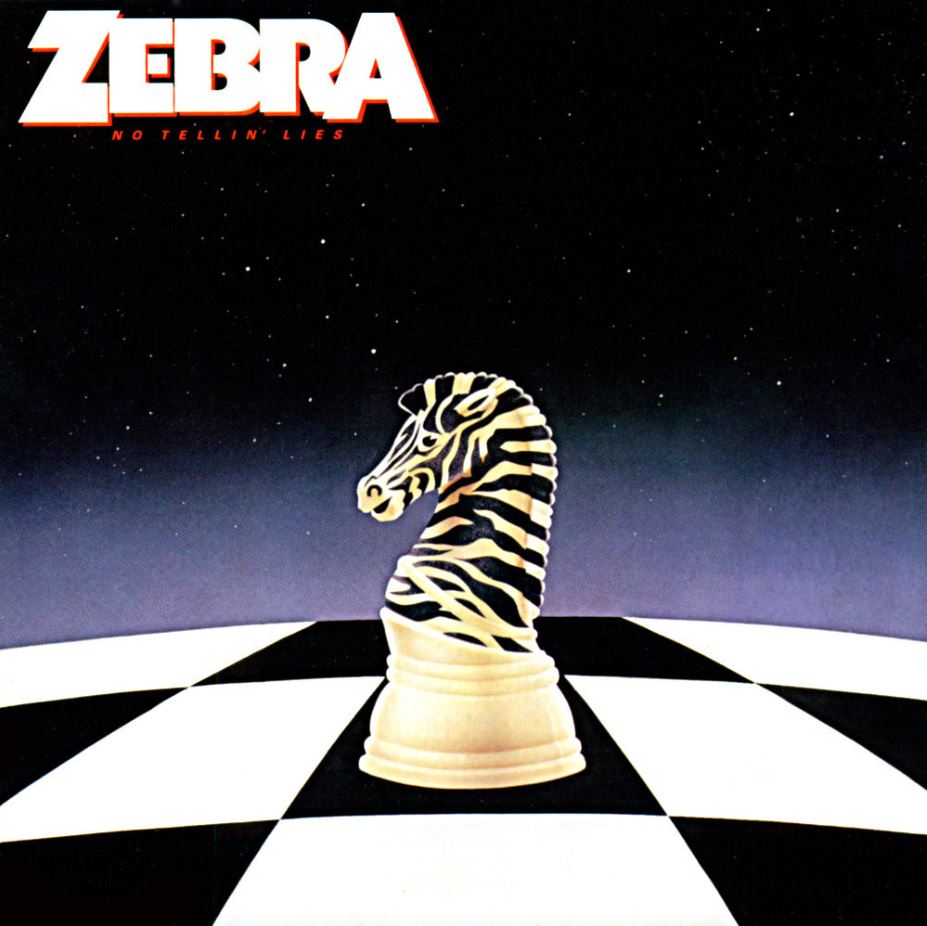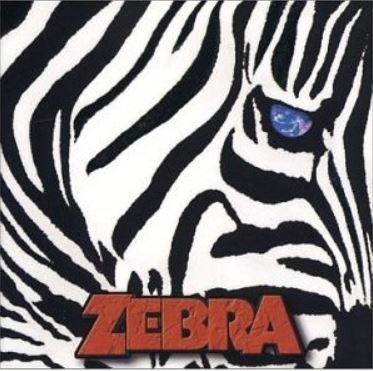
Some of you may be aware of a band called Zebra. Yes? No? You can hear a faint bell ring? They were quite the household name in rock circuits in the US for about five minutes in 1983, and had some MTV hits that are still remembered by people of a certain age. They never really broke through in Europe or elsewhere, but released some albums that are well worth investigating.
Being local to New Orleans, the guys played together in various constellations in the early 1970s and rose to local fame as a very proficient covers band. They would often play music from technically adept rock groups such as Led Zeppelin, Yes, Jethro Tull and Pink Floyd, while never forgetting their love for Beatles-like melodic sensibility and harmonies.
The line-up solidified in 1975 when long-time collaborators Randy Jackson (vocals/guitar) and Felix Hanemann (bass/keyboards/vocals) hooked up with Guy Gelso (drums/vocals). Around this time they adopted the name Zebra after seeing a cover of the magazine Vogue featuring a woman riding a zebra.
Incidentally: This line-up has never changed since they started as Zebra in 1975! They are still performing today, and it is the same three guys!
It took years before they managed to get signed. They found it easier to get steady gigs in the New York area, and relocated to Long Island in the early 1980s. They got noticed locally and were even recorded by local FM radio stations. One of those recordings made it onto a local collection. Shortly after, Atlantic offered them a contract.

Their debut album, simply called Zebra, was released on 21 March 1983. It was produced by Jack Douglas, known for the albums he made with Cheap Trick and Aerosmith. He later also produced the follow-up.
The debut album is without question Zebra’s magnum opus. Two singles were pulled from the album. The first one, Who’s Behind the Door, was Zebra’s biggest hit. It was played on MTV and even got some radio play, making it to #61 on the US Hot 100 chart (but all the way to #10 on the US Mainstream Rock chart). Music fan Jennifer H. remembers the song well from those days: “The only Zebra song I knew for years was Who’s Behind the Door, which got some rotation on American MTV back in the early 80s. I’ve discovered more of their songs since. They have some great songs!”
The other single was Tell Me What You Want, which is also fondly remembered by many. It dodn’t do quite as well as the first single, stalling at #107 in the US Hot 100 chart (#29 in the US Mainstream Rock). It does not matter. A great song is a great song.
Music fan John Wilbur, who grew up in the New York area at the time, remembers those days fondly: “Zebra’s debut album was the premier driving album of its day. Pop the cassette in, crank the volume up until your internal organs vibrated, and put the hammer down. Great days! There was a strong connection to Long Island, NY with this band too. Not a dud on the debut album.”
A few more songs from this album deserves a spotlight. This is a great melodic gem in the form of the ballad Take Your Fingers From My Hair.
I’ve saved my favourite for last! The album ends in grand style with The La La Song. The elaborate vocal arrangements would have won me over on their own, but the incredible playing hits the mark as well. The song is playful and creative, featuring progressive elements with the song developing over many movements. One can definitely hear shades of the band Yes here!

Just one year later, in September 1984, they launched the follow-up album No Tellin’ Lies, which is just about (but – if the push comes to shove – maybe not quite!) as good as the debut.
Two more singles were released from this album. The band had toured relentlessly behind the first album, and after just taking a break to record the follow-up they went out again, doing their bit to promote their music. Despite that effort, none of the new singles would improve on the success of the first ones. The first single Bears did not chart in the US Hot 100 at all, but managed a respectable #15 on the US Mainstream Rock chart.
I personally prefer the second single from the album, the feisty rocker Wait Until the Summer’s Gone. This song recorded no chart placements.

A third album, 3.V, followed in May 1986. This marked a new, more radio-friendly direction as the record label started requesting changes in a desperate attempt to ‘make it’. Suffice to say, it didn’t work. The album still contains traces of the band’s classic sound, but it’s clearly watered down. It the album without worth? No, not at all. In fact, if you like a slice of 1980s-style radio-friendly melodic pop/rock it may tick all your boxes. Still, it is hard to see the band forced to make uncomfortable changes in their musical style, so this is still the Zebra album I’d recommend that people check out last.
Can’t Live Without is probably the track from 3.V closest resembling the earlier sound.
The band continued to tour for the remainder of the 1980s, but went on a temporary hiatus after being dropped by Atlantic in the early 1990s. This allowed Randy Jackson to do a solo project while the band took stock of changing musical climates and the future for Zebra. They reconvened in 1994 and continued primarily as a live act, but they finally released one more studio album – Zebra IV – on 8 July 2003.

To date this is still their last recorded work. A lot could be said about what a shame it is that a band of this calibre never created more music, but on a more positive note, Zebra IV is at the very least a much better end to their recording career than 3.V would have been. The classic Zebra sound is more or less back, with some natural changes to be expected (possibly slightly heavier/punchier with a more modern production) as it was created 20 years after the first one. It does not sound like it’s made in the 1980s, but you do hear it’s the same band.
A great example of a more modern/grown up version of Zebra is the track Arabian Nights.
As you will understand by now, catching up on Zebra if they are a new acquaintance is not too difficult as they only have four albums (a compilation and some live albums aside). The band is still touring, and have been especially active doing live streams throughout 2020 during the time of social distancing. A few years ago, their albums were re-released in remastered, extended editions on CD, digital platforms, and through streaming services such as Spotify. The two first albums are definite must-haves, but any Zebra is always good company.

Facebook Comments